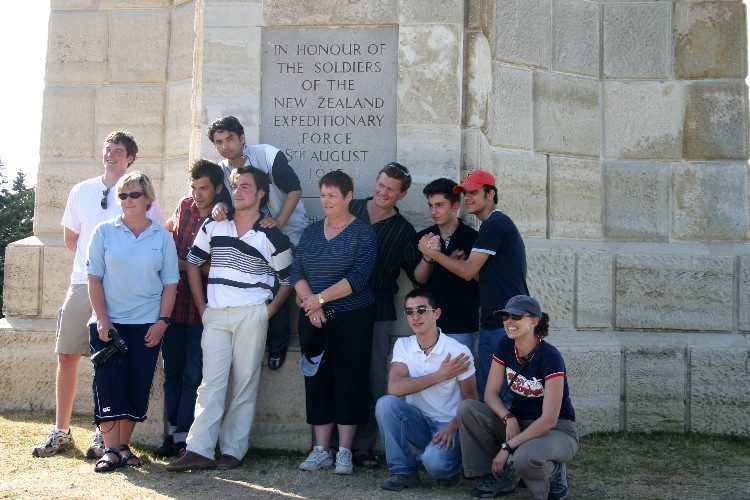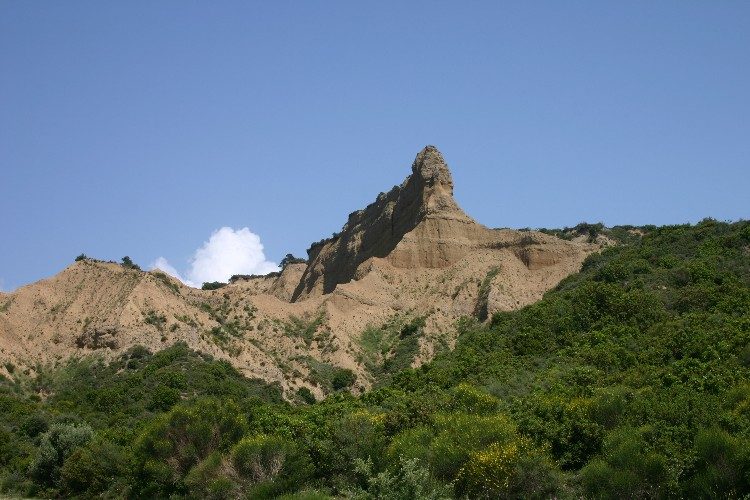Looking Down the Dardanelles Towards Gallipoli
There is confusion at 6:30 a.m.
Haluk tells us this is the Turkish way. The shuttle that has arrived to take us to the public bus station is too full to fit the 8 of us. We stand around waiting while mobile calls get made and mobiles ring, and finally a 2nd shuttle appears. Haluk is confident that the bus to Çanakkale will not leave without us, and he is right. We arrive at the station, we get on the bus, and off we go, later than scheduled. We will be taking buses for our tour of Turkey – Haluk tells us that Turkey has good roads, but doesn’t have good trains and that flying here is still very expensive. The day certainly proves him right as to the condition of the roads.
The Hellespont
We have to go across Istanbul, and the traffic is not bad – much easier than yesterday evening. The city doesn’t go on forever in the manner of western cities but ends very quickly, and soon we can see the Sea of Marmara, on our left. The land is absolutely lush with the myriad greens that signal late spring. We drive through Thrace, following the coast for a couple of hours, and then the highway veers inland. 3 hours later we come over a hill and there are the Dardanelles – the Hellespont. It is amazing to me to see them, they are so famous, both from Greek mythology and from many wars fought to control access to Istanbul and the Black Sea. We drive to the little town on the European side of the Dardanelles, where the bus will get on a ferry to cross to Çanakkale. Our group gets off because we are taking a tour of Gallipoli, and so we transfer to a smaller bus. After a nice lunch in a restaurant with a view of the bend in the Dardanelles – you think you could see all the way back to Istanbul – we head off.
The Dardanelles, Objective of the Gallipoli Campaign
Gallipoli is overwhelming. An extended campaign to gain control of the Dardanelles, and thereby to force Turkey out of WWI and gain a year-long shipping route to Allied Russia, well over 100,000 people died on these hills, about equally divided between the Expeditionary Forces (chiefly Australians and New Zealanders – the ANZACs, with a few others – British, Newfoundlanders – thrown in for good measure) and the Turks. After 9 months of intense, protracted battle, with high casualties on both sides, the advances made by the Expeditionary Force were minuscule, and the Expeditionary Forces were finally ordered out. Everyone should visit this place to see the uselessness and futility of war. Frank says that he wishes that Bush and Blair had visited before starting the war in Iraq, and notes that that situation has some striking similarities to Gallipoli.
The Retired Turkish Navy Colonel
It is also interesting to see with Ali, our guide for Gallipoli, who is a retired Turkish Navy Colonel. He presented the events from a Turkish point of view. Clearly not a fan of war, he also had some wisdom that I wish had been thought about in Washington and London: The Turkish view of the defeat of the Expeditionary Forces is not that the British blundered significantly, which is the western side of the story. It is that the Turks were fighting for their homeland and that despite the Expeditionary Forces having a significantly better technology and supplies than the Turks, the Turks could not be beaten because of what they were fighting for.
It is an emotional first day in Turkey: Gallipoli indeed, is overwhelming.






Comments